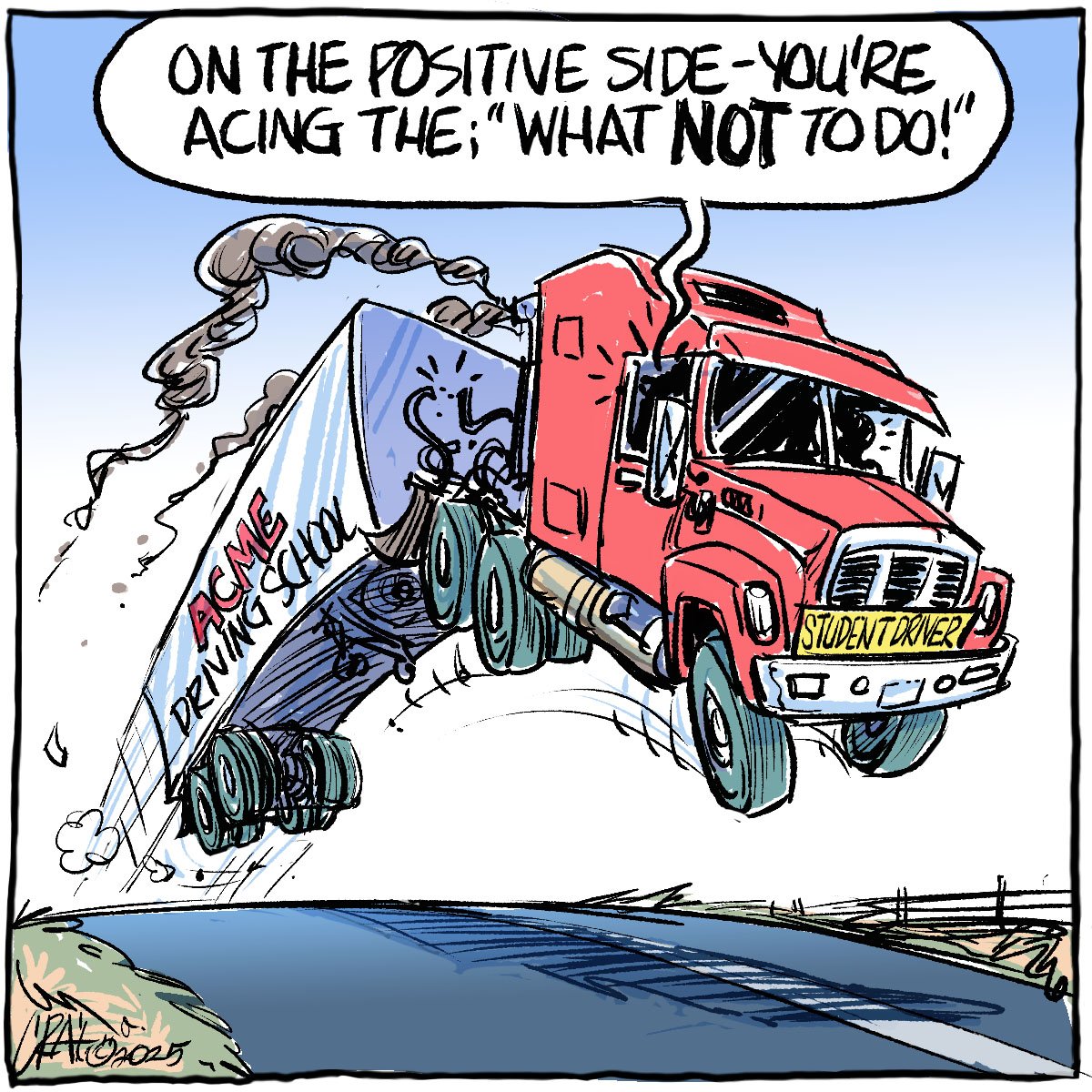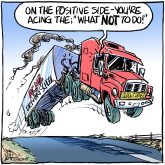Flying over the southern tip of Lake Manitoba last month provided a jarring 30,000 foot view of the water still rushing in from the Portage Diversion.
Weeks after the controversy over breaching a dike at the exotically named Hoop and Holler Bend, the Manitoba flood situation has eased out of the national news cycle. Seeing the amount of mucky water still flowing into the lake, and the amount of land also murkily afflicted, was therefore a bit of a surprise. Actually, it was shocking. Two months later, there was an incredible amount of water still moving … and still standing.
Read Also

Efforts to improve trucking safety must be applauded
The tragedy of the Humboldt Broncos bus crash prompted calls for renewed efforts to improve safety in the trucking industry, including national mandatory standards.
The Manitoba government seemed to limp into dealing with the flooding caused by the rising Assiniboine River. It didn’t see it coming soon enough; it didn’t react quickly enough; and it didn’t offer compensation assurances early enough.
The government may have learned something from its public drubbing.
In late July, premier Greg Selinger announced that the province would dig a $100 million channel to reduce the record water levels in Lake Manitoba. The channel will drain Lake St. Martin (into which Lake Manitoba flows) into Big Buffalo Lake, and thence to bigger, deeper Lake Winnipeg.
On the face of it, this sounds like a good idea. While the diversion was slated to close last weekend water levels remain high. The channel should at least help keep Lake Manitoba from boiling over, swamping pastures, hay land, homes and cottages.
If my eyes did not deceive me, something must be done. I know pretty much nothing about sedimentation, but it seems obvious that if flooding continues for a long time – and it could, if weather patterns stay wetter and wilder than usual – you’re going to end up with a bigger delta and less usable land. That could mean moving farmers and livestock out, more or less permanently.
If it goes on for too long, the lake could even become shallower and more flood-prone. Increased sedimentation contributes to the development of flood plains, and plugs dams, streams and rivers. Therefore, the lake needs another outlet.
Selinger appears to understand that there could be long-term problems.
“If no action is taken now, hundreds of properties (around Lake Manitoba and Lake St. Martin) will be threatened by flood waters for an extended period,” he said when announcing the new channel.
For the sake of the landowners around LakeManitoba, I hope this works.
opinion, none, none














